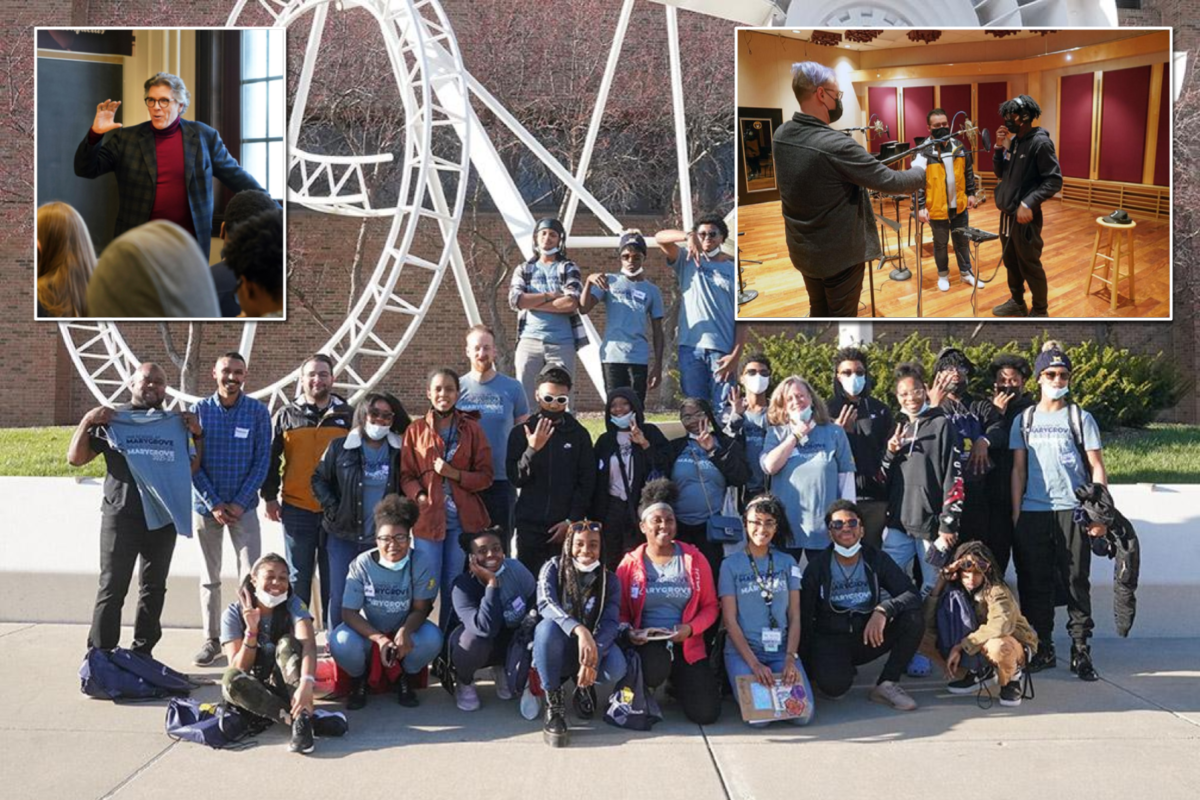“In song, you have one of the most amazing diaries of any generation’s culture at a given time.”
That statement, by Thomas Hampson, one of the world’s most renowned operatic baritones, is central to his vision of education and artistic research, and the impetus for a collaboration with the U-M School of Music, Theatre & Dance (SMTD), and a Detroit high school class for the “Sing My Song” project.
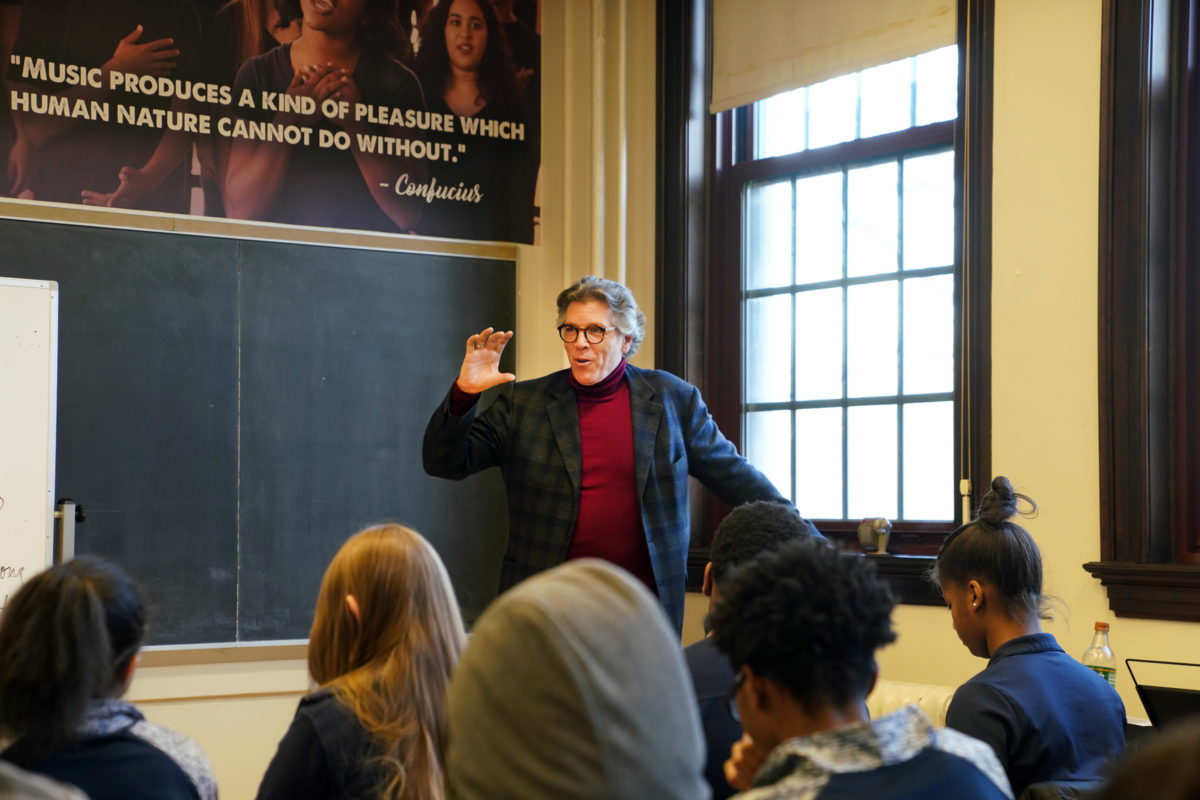
In an earlier visit to Detroit’s School at Marygrove, Hampson shared his passion about the positive intercultural effects possible through music and lyric with students in the high school’s humanities course, “Children in Peril,” taught by Jane Jordan. Jordan is the founding Social Studies teacher in The School at Marygrove – a groundbreaking collaboration between the U-M School of Education and the Detroit Public Schools (for more about this partnership, see “More Online”).
After a year-long pause due to Covid-19 precautions, the 21 students in this year’s “Children in Peril” class undertook a semester-long project collaborating with School of Music, Theatre & Dance graduate music composition students, Alfredo Cabrera and Nicholas Felder. The project culminated in a visit to U-M’s North Campus, including a professional-level recording session in the Digital Media Commons Audio Studio in The Duderstadt Center. There, each student gave a spoken-word performance of six-word memoirs written for their coursework. Those vocal tracks became the underlying content of the musical composition created by Cabrera and Felder.
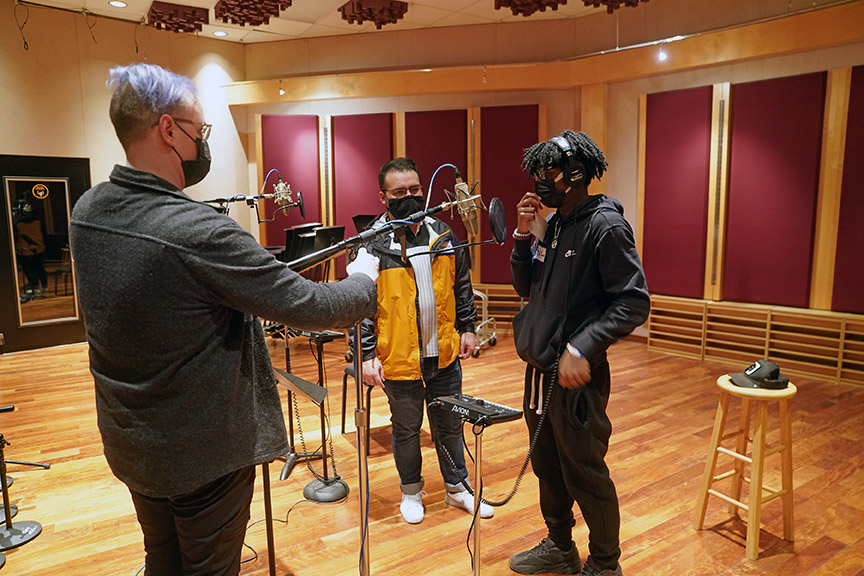
Jordan’s course “Children in Peril” is for 9th and 10th grade humanities students at Marygrove. It examines the history of and consequences for enslaved children, and indigenous children taken from their families, going back to the early 18th century in Africa, Europe, and the Americas.
For research materials the class studied autobiographies including “The Interesting Narrative of the Life of Olaudah Equiano, Or Gustavus Vassa, The African” – the story of an 11-year old African boy kidnapped and sold into slavery in 18th century Britain, and “Incidents in the Life of a Slave Girl” by Harriet Jacobs (1831–1897).
The powerful subject matter tackled by Jordan’s students was what attracted Mark Clague and Christie Finn to propose the collaboration as part of SMTD’s ongoing partnership with Thomas Hampson, through his educational organization, The Hampsong Foundation (the foundation appends the letter “g” to the singer’s name).
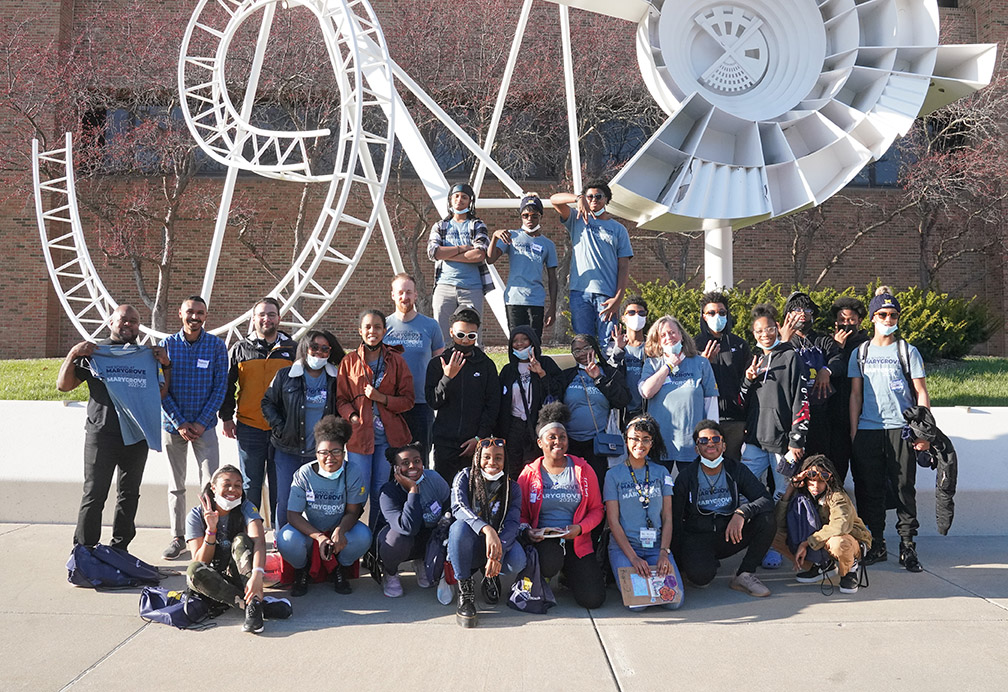
Mark Clague is Professor of Musicology, and Associate Dean for Collaborations and Partnerships in the School of Music, Theatre & Dance. Christie Finn is Managing Director of the Hampsong Foundation and Research Director of the Classic Song Research Initiative. The latter is the ongoing educational research project between the two organizations begun in 2020, following several years of individual collaborations between SMTD faculty and the foundation.
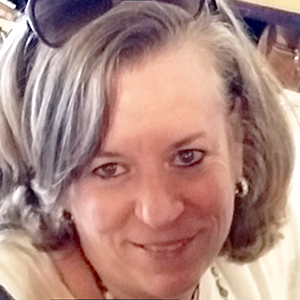
“Mark and Christie visited the class the first year that the School at Marygrove opened”, says Jane Jordan. “That year, my students were writing poetry they had composed for the class based on our readings. When Mark and Christie heard them read, they were really impressed and wanted to begin a collaboration right away. We were ready to start and then all our classes went virtual in response to Covid-19 policies.”
“So, this past semester we were able to begin again. But this time, rather than having the students create a collaborative poem, or individual ones, I had them create six-word memoirs, based on the readings for the class.”
Examples of the six-word memoirs by students in the “Children in Peril” course reflecting on the lives of Olaudah Equiano, Harriet Jacobs, and each student’s own life
by Laila A.
Olaudah Equiano: I have endured so much grief.
Harriet Jacobs: I have experienced hell on Earth..
Laila A: I take charge of my future.
by De’Jon N.
Olaudah Equiano: Another day, more pain away.
Harriet Jacobs: Not having rights or freedom period.
De’Jon N.: Head so high, God can see.
During the semester a plan evolved to use the students’ six-word memoirs in the composition, “We decided we would capture the students’ own spoken words in song,” continues Jordan. “Alfredo and Nicholas came out several times to show us how they would work with us, approach the composition, and graphic scoring — things the students knew nothing about.”
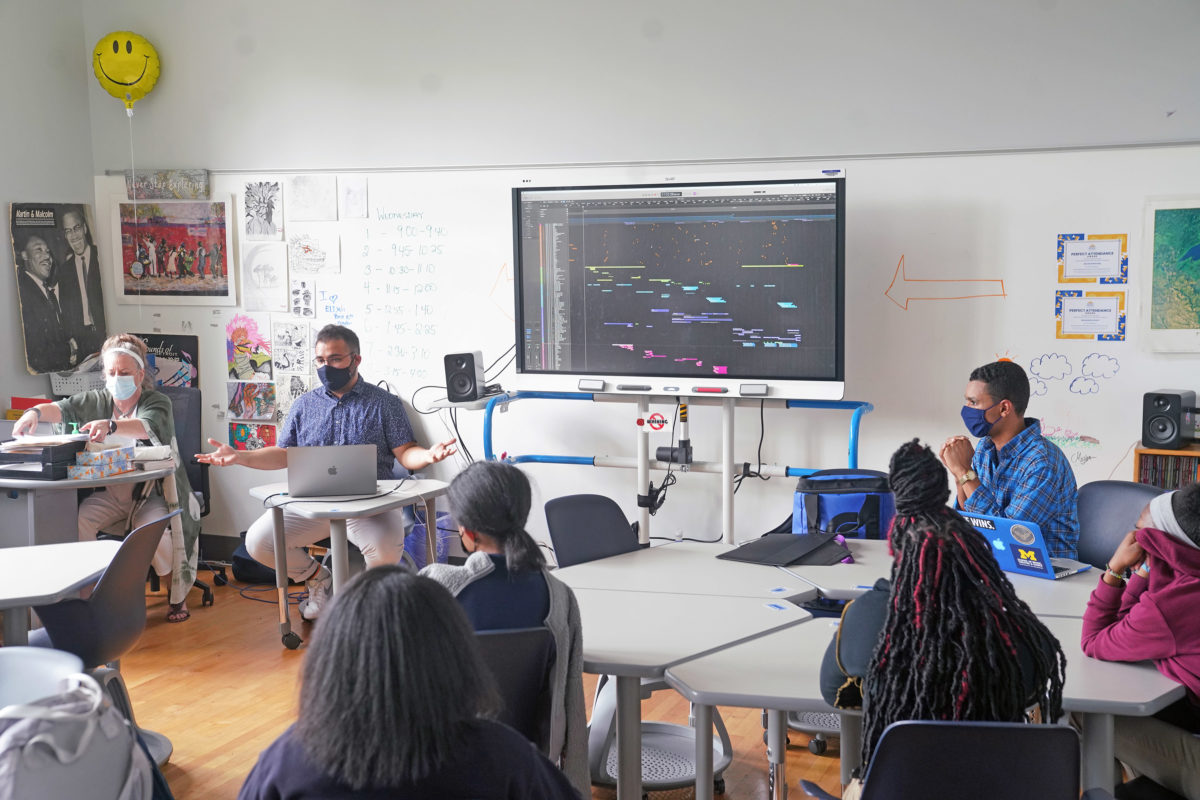
Throughout the school semester, composers Cabrera and Felder worked closely with the Marygrove students to enhance their knowledge of contemporary approaches to composition while at the same time eliciting the personal musical interests of individual students.
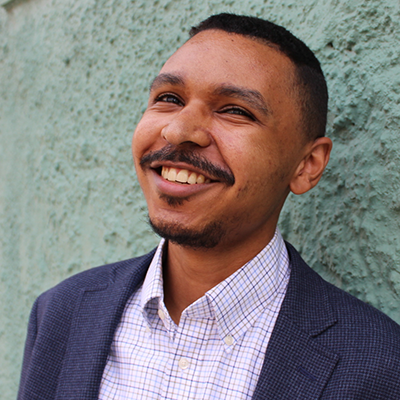
This collaborative approach to music education, and the principles of composition and performance, were key to the students translating their own words into a complex and sensitive expression in music and song.
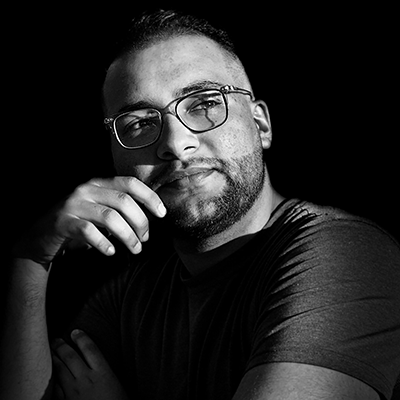
“We made sure that we, as composers, were merely facilitating the creative process and bringing to life the vision of the students”, says Alfredo Cabrera.
Clague and Hampson first met through a shared interest in the role of song and performance in American history. This was another connection leading to their collaboration on the Sing My Song project.
“Thomas has a powerful vision for how art can spark positive change in the world and devotes a significant portion of his time and resources to create learning experiences to support that vision, especially among K-12 students.” says Clague.
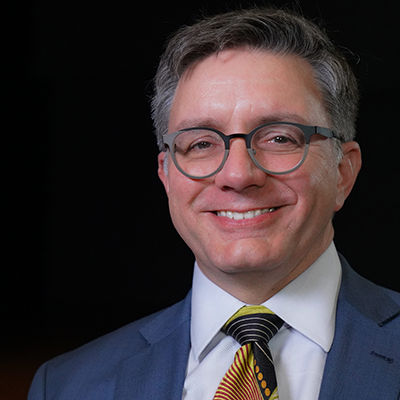
“We first met at a National Endowment for the Humanities institute for K-12 educators that culminated in a concert at the Library of Congress with U-M alumni. Thomas has come to see a great opportunity in working with the U-M to pursue education and research on intercultural dialogue enabled by shared experiences of music, and especially through song.”
At the outset of the partnership Hampson observed, “U-M is the perfect environment to develop the existing multifaceted projects of the Hampsong Foundation with the strength of the University as a research institution and music school, and allow the three prongs of this partnership — performance, research, and education — to flourish and provide invaluable experiential learning opportunities to all involved.” In addition to his collaboration with SMTD through the Classic Song Research Initiative, Thomas Hampson leads seminars, master classes and collaborative performances with students and faculty in his role as the school’s Distinguished Visiting Artist in Voice.
Also interested in those three dimensions, Alfredo Cabrera describes how he got involved with the Sing My Song project. “Though all I knew initially was that the project involved setting poetry written by high school students that focused on historically marginalized communities, I was really excited from the start. My work as a composer centers around art as activism and, on a technical level, on the intersection of music/sound and spoken word/singing, so I was naturally drawn to the project.”
“I was also excited about the possibility of engaging with students in imaginative ways after our first meetings with Christie and Ms. Jordan. They showed us that this would be an environment that allowed for a lot of creative flow both from the students and in the way the instructors engaged and collaborated with them.”
Nicholas Felder adds that the collaborative process enabled Jane Jordan’s students to participate fully in the music composition; the final work was more than just setting words to music. “From the beginning, Alfredo and I both wanted this project with the students to be as collaborative as possible. We started out by asking everyone to share their favorite songs and what they liked about them: was it the beat or overall vibe of the music? Maybe the lyrics? Or the sound of the singer’s voice?
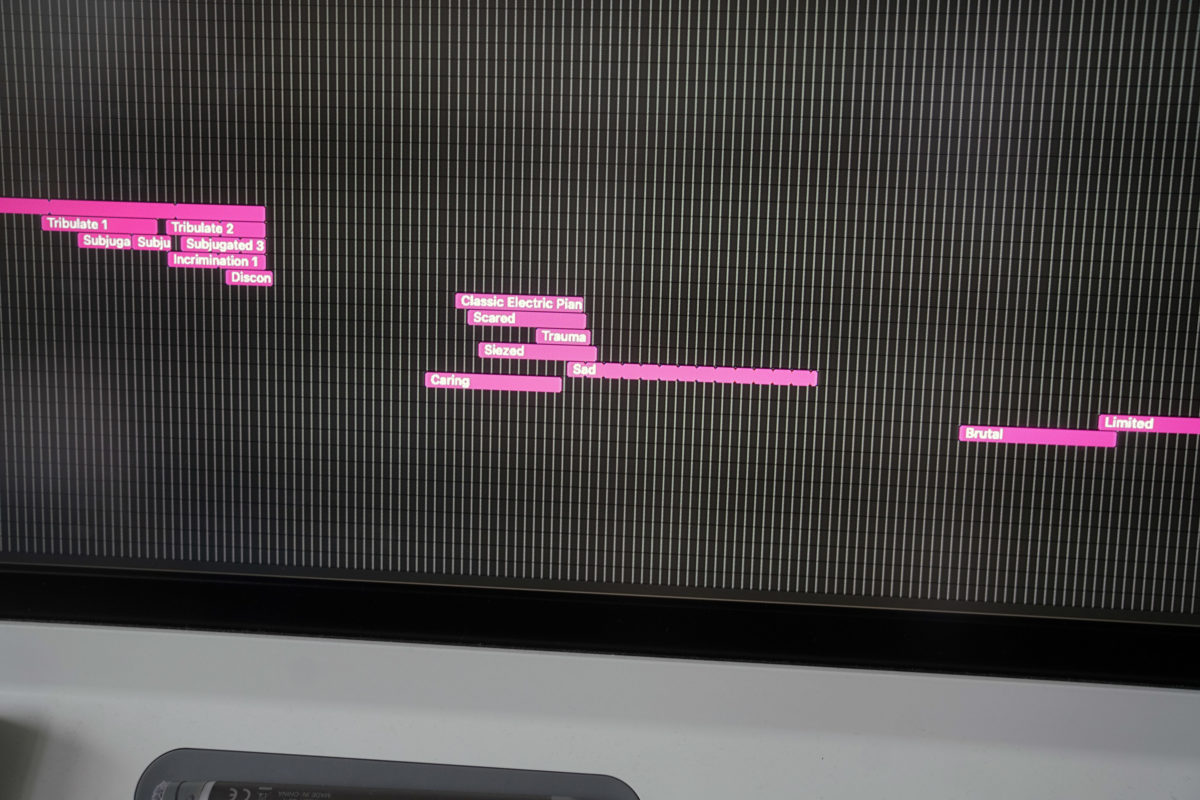
“We talked about using different symbols, like dots or squiggly lines, to visualize the sounds we wanted and organizing them into a map for a song idea. This proved to be an accessible way to introduce songwriting and empowered the students to talk about music on their own terms.”
Nicholas goes on to describe their collaboration with the high school students. “In the last couple of classes, we worked with the students on three six-word memoirs they were writing, connecting historical and personal trauma as well as healing and uplift. We had them write their stories on note cards and then they organized the cards into visual maps for three verses, which became the skeleton for the song.”
As the process of creating the final composition progressed, Nicholas and Alfredo prepared the students to record their prose in a professional audio studio setting, “laying down the tracks” that would lie at the heart of the composition. That meant a trip to the U-M Ann Arbor Campus, and the recording studios at the Duderstadt Center.
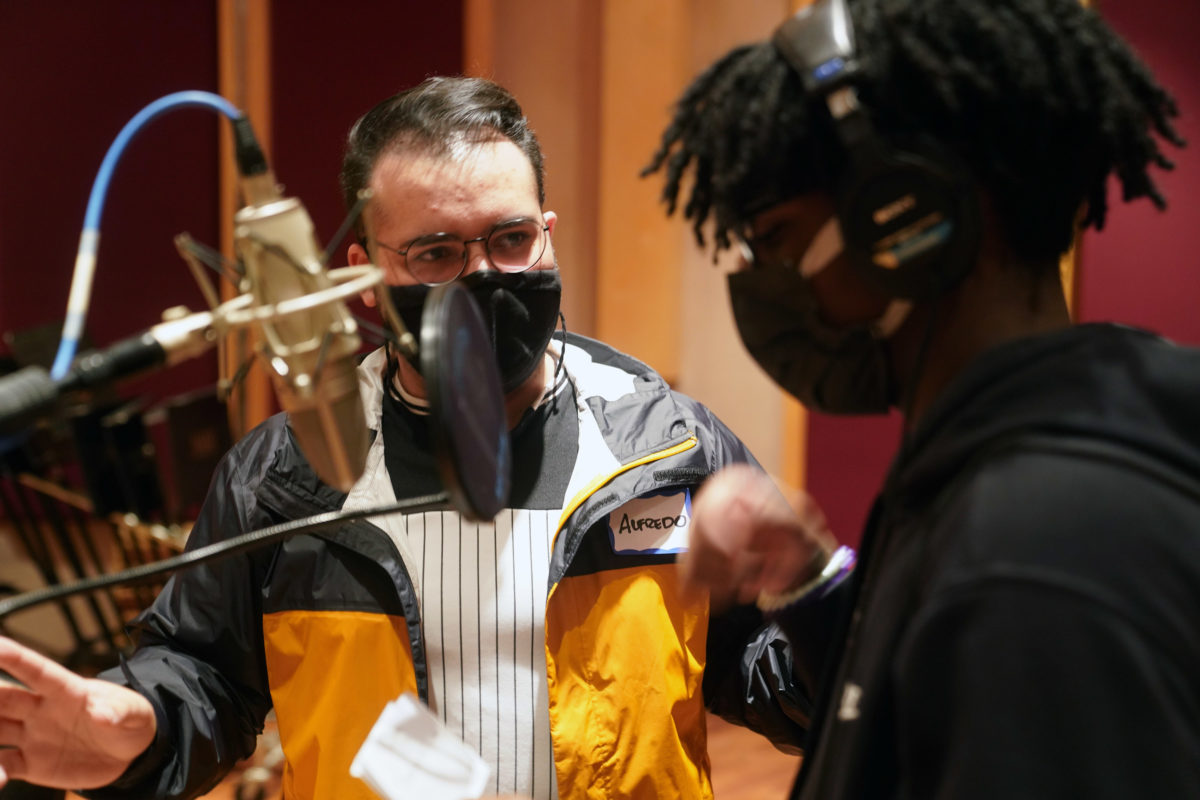
For the students from The School at Marygrove, the visit to campus and the recording session were an unexpected highlight of the project
In addition to the experience of becoming recording artists in a professional studio, the students were given a tour of the other advanced technology environments in the DC that support research and learning, tailored especially to the curricula of the U-M’s North Campus schools.
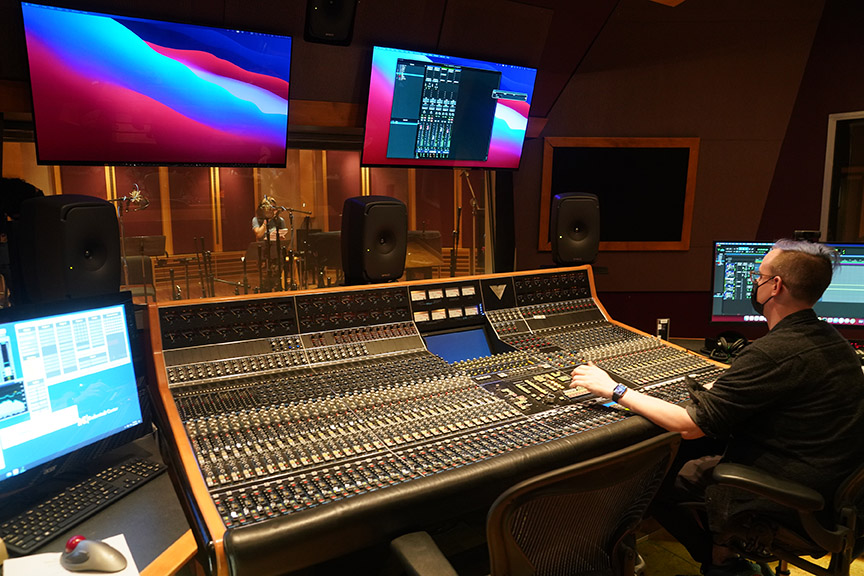
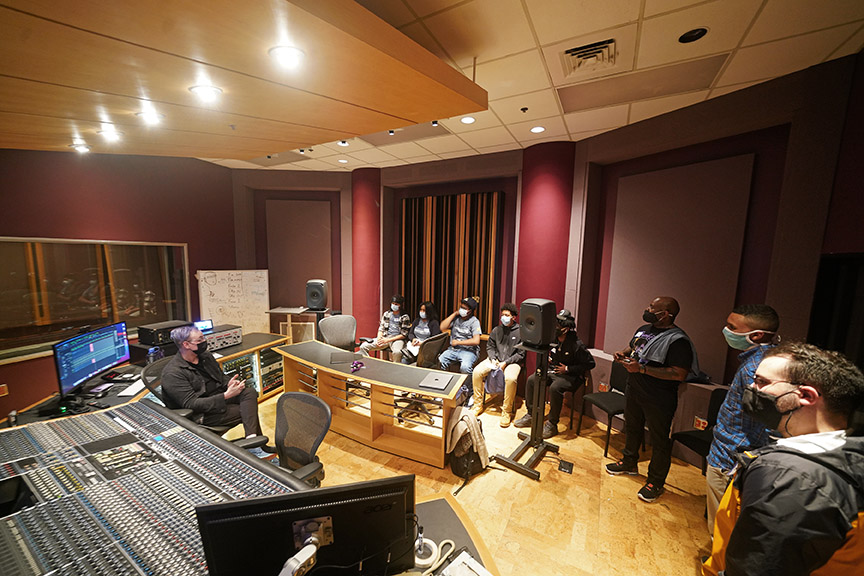
Jordan’s students spent time soaking up the multimedia and 3D visualization environments managed by the Digital Media Commons staff in the DC. They took an in-depth tour of the Video Studio and all three Audio Studios where they saw the latest in professional media production demonstrated.
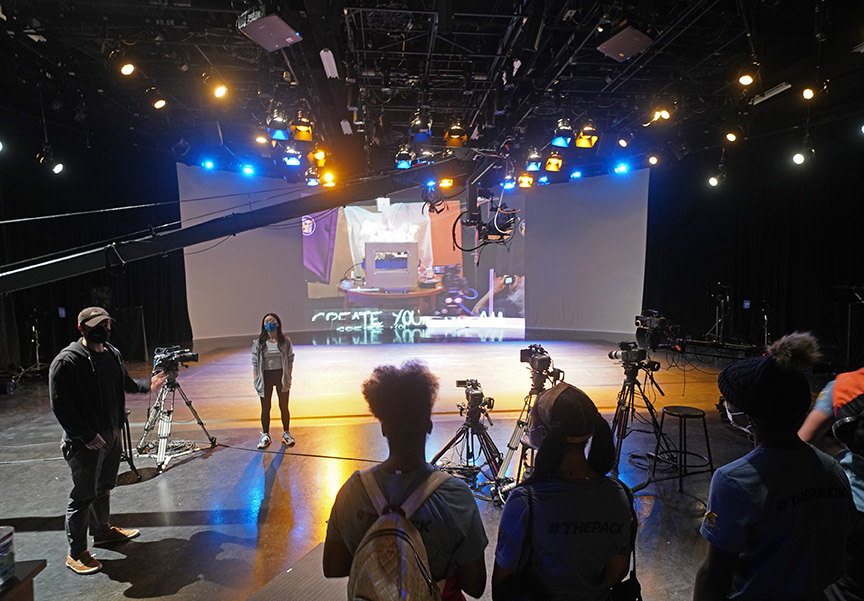
The Visualization Studio is the incubator space for virtual reality technologies being incorporated into U-M teaching, research projects, and in medical research and clinical practice.
In the Fabrication Studio, students and faculty have ready access to advanced 3D printers and scanners used in everything from aerospace and cardiology, to paleontology.
“The visit and seeing the areas in the Duderstadt Center ended up being transformative for many of the kids.” observes Jane Jordan. “Also the experience of just being at the U-M. The kids were saying ‘I can see myself being here. I can see myself as part of this community.’ “
“Going to college for a lot of kids is extremely daunting if you’re not exposed to it. Seeing the possibilities they could see for themselves, that it can include college, when maybe they’ve never even considered it. I didn’t expect that would be one of the benefits of this whole experience.”
Alfredo Cabrera adds, “I especially believe that the students’ visit to the Duderstadt Center showed them what is possible when creative minds like theirs are given the space and tools to achieve their full potential. I hope that our time together helped them to connect with their world or their past in new and exciting ways, regardless of their academic or professional aspirations.”
“Sing My Song” is just one of the projects to come out of the Classical Song Research Initiative partnership between SMTD and the Hampsong Foundation.

Christie Finn, says of the Marygrove “Sing My Song” project and the work of Cabrera and Felder, “Listening to this recorded outcome will allow others in the present and future to engage with those experiences of 2022 via the combination of text and sound and seek to empathize and understand across historical and perhaps racial/national boundaries.”
“This is deeply aligned with the work that we are doing in the Classic Song Research Initiative, and “Sing My Song” engages with the three prongs of the partnership: performance, research, and education. We are especially proud of this collaboration, which is one of many projects that form the Classic Song Research Initiative.”
More about the Partners in mentioned in this story:
- “Sing My Song” Collaboration Winter 2022 – with the recordings:
https://hampsongfoundation.org/resource/sing-my-song-collaboration-winter-2022/ - Thomas Hampson:
https://thomashampson.com/ - The Hampsong Foundation:
https://hampsongfoundation.org/ - The Classic Song Research Initiative:
https://hampsongfoundation.org/project/classic-song-research-initiative/ - U-M School of Music, Theatre & Dance: “New Partnership Between U-M, Hampsong Foundation Strengthens Performance, Research, and Education”:
https://smtd.umich.edu/hampsong-partnership-2020 - The School at Marygrove:
https://www.detroitk12.org/marygrove - The U-M School of Education Detroit P20 project (School at Marygrove)
https://soe.umich.edu/p20 - The James and Anne Duderstadt Center:
https://dc.umich.edu - Digital Media Commons Audio Studios in the Duderstadt Center
https://www.dc.umich.edu/partners-2/media-and-studio-arts/audio-studios
